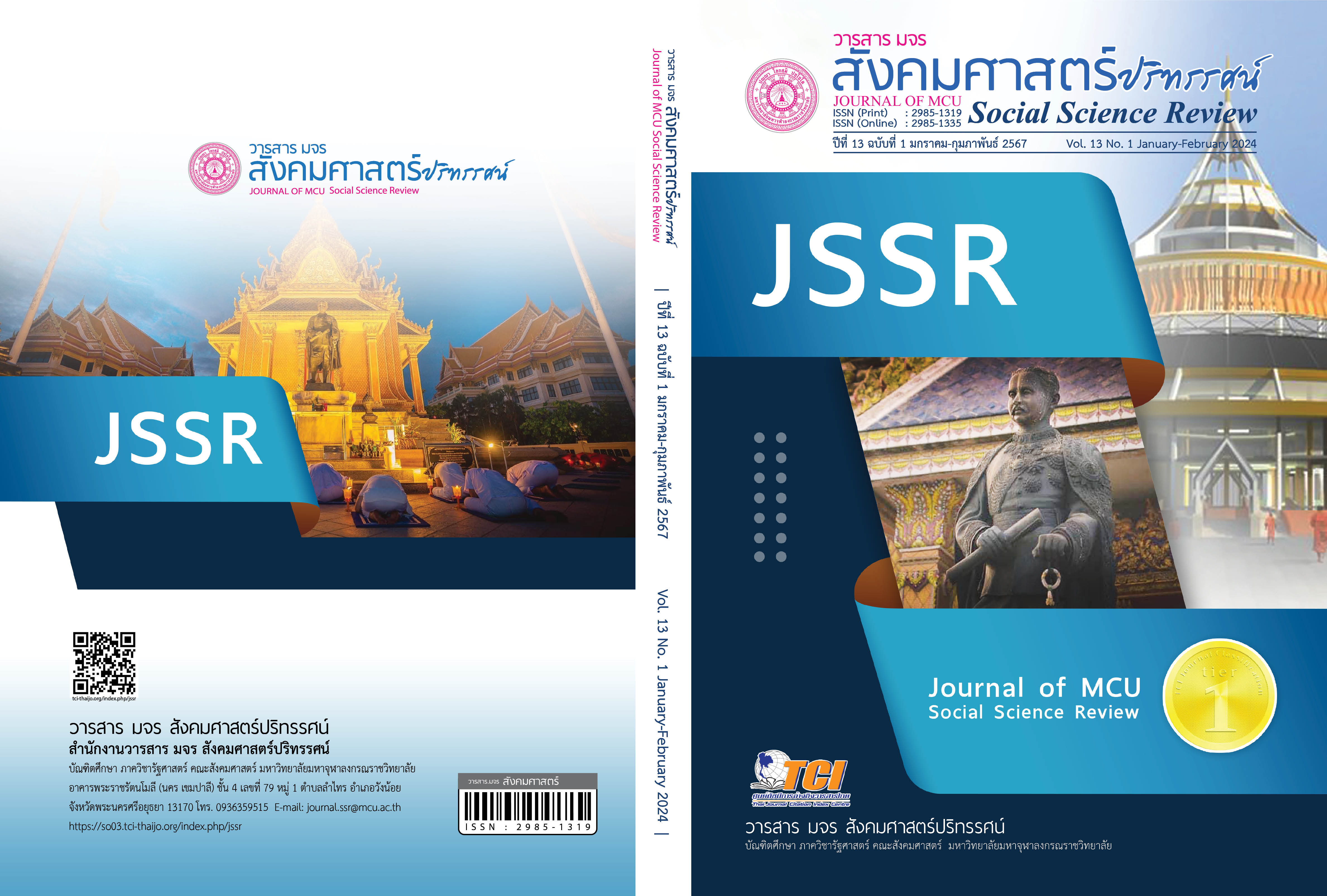ผู้นำ : คุณลักษณะที่พึ่งประสงค์ขององค์กร
คำสำคัญ:
ผู้นำ, คุณลักษะที่พึ่งประสงค์, องค์กรบทคัดย่อ
บุคคลที่ได้รับการแต่งตั้งขึ้นมา หรือได้รับการยกย่องขึ้นให้เป็นหัวหน้าเป็นผู้ตัดสินใจ เพราะมีความสามารถในการปกครองบังคับบัญชา และจะนำพาผู้ตามหรือผู้ใต้บังคับบัญชาให้ไปในทางดีหรือชั่วได้ โดยใช้ระบบกระบวนการติดต่อซึ่งกันและกันในอันที่จะทำให้บรรลุเป้าหมาย และความสามารถที่จะชักจูงผู้อื่นให้ความร่วมมือร่วมใจกับตน ดำเนินการไปสู่จุดมุ่งหมายของตนได้ดังนั้น การเป็นผู้นำจึงเป็นทั้งศิลปะของการที่จะมีอิทธิพลเหนือคน และจะต้องนำคนแต่ละคนไปโดยที่คนเหล่านั้น มีความเชื่ออย่างเต็มใจ มีความมั่นใจในตัวของผู้นำ มีความเคารพนับถือ และให้ความร่วมมือกับผู้นำด้วย ความจริงใจ เพื่อจะได้ปฏิบัติภารกิจให้ลุล่วงไปด้วยดี
ผู้นำเป็นส่วนหนึ่งของการบริหารหรือการจัดการ ผู้จัดการหรือผู้บริหารมีหน้าที่วางแผนและจัดระเบียบให้งานดำเนินไปได้ด้วยความเรียบร้อย แต่ผู้นำมีหน้าที่ทำให้ผู้อื่นตามและการที่คนอื่นตามผู้นำก็ไม่มีใครรับรองว่า ผู้นำจะนำไปในทิศทางที่ถูกต้องเสมอ ผู้นำที่เข้มแข็ง ก็อาจจะไม่ใช่ผู้จัดการ หรือผู้บริหารที่ดีได้ หรือผู้บริหารผู้จัดการที่ดี ก็อาจไม่ใช่ผู้นำที่ดีก็ได้ ดังนั้นองค์การใดที่ต้องการประสบความสำเร็จย่อมต้องการผู้บริหาร หรือผู้จัดการที่มีลักษณะเป็นผู้นำเป็นอย่างดี ซึ่งประกอบด้วย ผู้นำที่มีความรับผิดชอบ ผู้นำมีความเชื่อมั่นในตนเอง ผู้นำที่มีความเฉลียวฉลาด ผู้นำมีความเข้าใจในงาน ผู้นำมีความริเริ่มและมุ่งมั่น ผู้นำที่มีความพร้อม เป็นต้น
เอกสารอ้างอิง
เกษม วัฒนชัย. (2549). ธรรมาภิบาลกับบทบาทของขณะกรรมการสถานศึกษาขั้นพื้นฐาน. กรุงเทพฯ: สำนักพิมพ์ พิมพ์ดี.
จิรัตติกาล สุขสิงห์. (2566). ผู้นําในธรรม. วารสารสหวิทยาการนวัตกรรมปริทรรศน์, 6(1), 1-10.
ประจวบ แจ้โพธิ์. (2557). ความคิดเห็นของครูต่อบทบาทผู้บริหารในการพัฒนาการทำงานเป็นทีมของครูในโรงเรียนสำนักงานเขตบึงกุ่ม สังกัดกรุงเทพมหานคร. สุทธิปริทัศน์, 28(87), 269-280.
พระมหาสมชาย ขนฺติสรโณ และคณะ. (2566). บทวิจารณ์หนังสือ : ภาวะผู้นํา 5 ระดับ. วารสารพุทธนวัตกรรมและการจัดการ, 6(1), 205-216.
ราชบัณฑิตยสถาน. (2556). พจนานุกรมฉบับราชบัณฑิตยสถาน พุทธศักราช 2554 (พิมพ์ครั้งที่ 6). กรุงเทพฯ: สำนักพิมพ์ราชบัณฑิตยสถาน.
วีรวัฒน์ ปันนิตามัย. (2551). เชาว์อารมณ์ EQ: ดัชนีเพื่อความสุขและความสำเร็จในชีวิต (พิมพ์ครั้งที่ 7). กรุงเทพฯ: สำนักพิมพ์แห่งจุฬาลงกรณ์มหาวิทยาลัย.
สำนักงานทดสอบการศึกษา. (2562). การประเมินผลทางการศึกษา. กรุงเทพฯ: กรมการศาสนา.
Buzan, T. (2012). The power social intelligence. Welling borough. England: Thorsons.
Cattell, R. B. (2010). Manual for jr – sr. High school. Personality Questionnaire “HSP” From A. llinos: Institute for Personality and Ability Testing.
Downing, J. & Thrakrey, D. (2013). Reading and Readiness (9th ed). London: University of London Press.
Gary, A. Y. (2010). Leadership in Organization (8th ed). New Jersey: Prentice Hall.
Lafrance, G. R. (2016). Psychology for Teaching. California: Woods Worth Publishing Company.
Morgan & Hunt. (2009). The Commitment - Trust Theory of RelationshipMarketing. Journal of Marketing, 20, 30-40.
Simon, M. (2012). Managing Ideas for Profit: The Creative Gap. London United Kingdom: McGraw-Hill.
Stegmeier Diane Innovations in office design. (2008). The critical in fluenceapproach to effective work environments. Hoboken. NJ: John Wiley & Sons.
The Lixicon Webster. (2008). Dictionary Encycloped Edition. The United State of American.
Wayne, K. et al. (2012). Educational Administration: Theory-Research Practice (9th ed). New York: McGraw – Hill.
Williams, W. M. & Lana T. Y. (2014). Organizational creativity Handbook of creativity. New York: Cambridge University Press.
ดาวน์โหลด
เผยแพร่แล้ว
รูปแบบการอ้างอิง
ฉบับ
ประเภทบทความ
สัญญาอนุญาต
ลิขสิทธิ์ (c) 2024 วารสาร มจร สังคมศาสตร์ปริทรรศน์

อนุญาตภายใต้เงื่อนไข Creative Commons Attribution-NonCommercial-NoDerivatives 4.0 International License.
เพื่อให้เป็นไปตามกฎหมายลิขสิทธิ์ ผู้นิพนธ์ทุกท่านต้องลงลายมือชื่อในแบบฟอร์มใบมอบลิขสิทธิ์บทความให้แก่วารสารฯ พร้อมกับบทความต้นฉบับที่ได้แก้ไขครั้งสุดท้าย นอกจากนี้ ผู้นิพนธ์ทุกท่านต้องยืนยันว่าบทความต้นฉบับที่ส่งมาตีพิมพ์นั้น ได้ส่งมาตีพิมพ์เฉพาะในวารสาร มจร สังคมศาสตร์ปริทรรศน์ เพียงแห่งเดียวเท่านั้น หากมีการใช้ภาพหรือตารางหรือเนื้อหาอื่นๆ ของผู้นิพนธ์อื่นที่ปรากฏในสิ่งตีพิมพ์อื่นมาแล้ว ผู้นิพนธ์ต้องขออนุญาตเจ้าของลิขสิทธิ์ก่อน พร้อมทั้งแสดงหนังสือที่ได้รับการยินยอมต่อบรรณาธิการ ก่อนที่บทความจะได้รับการตีพิมพ์ หากไม่เป็นไปตามข้อกำหนดเบื้องต้น ทางวารสารจะถอดบทความของท่านออกโดยไม่มีข้อยกเว้นใดๆ ทั้งสิ้น





